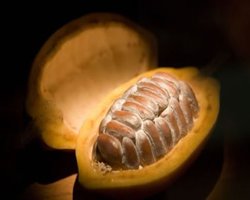How can we be sure that the premium chocolate we have bought really is what we have paid for? For many people there is nothing better than biting into rich, premium chocolate.
Unfortunately, not even the most discerning taste buds can determine whether it is made entirely from premium cacao beans.
Scientists from the US Department of Agriculture, Nanking Agricultural University in China, and the University of the West Indies in Trinidad & Tobago, report in the Journal of Agricultural and Food Chemistry that they have found a new method to authenticate the purity and origin of cacao beans, chocolate’s ingredient source.
Lower quality beans are often mixed in with premium ones
Dapeng Zhang, Ph.D. and team point out that inferior cacao beans are commonly mixed in with top grade “premium” beans during the process of becoming chocolate bars, liqueurs and sauces. “But the stakes for policing the chocolate industry are high,” they add.
The chocolate industry is a massive, multi-billion dollar enterprise. As in the wine industry, in some sectors it is seen as much of an art as a business.
Many in the industry, distribution, retail, and a growing number of consumers are increasingly focusing on whether chocolates are really what confectioners claim them to be.
If we were able to rapidly authenticate premium and rare types of cacao beans, farmers would be encouraged to maintain cacao biodiversity instead of depending on the most abundant and easy-to-grow plants.
Scientists have found ways to confirm the authenticity of several other types of crops, including coffee, tea, olives, fruits and cereals. Unfortunately, those methods are not suitable for cacao beans.
Zhang and colleagues set out to see whether they could address this challenge.
Identifying DNA markers to authenticate premium cacao beans
The research team used the latest development in cacao genomics and were able to identify a small set of DNA markers known as single nucleotide polymorphisms (SNPs). SNPs give each cacao species its own unique fingerprint (the word SNPs is pronounced ‘snips’).
The technique is effective on a single cacao bean, and can be scaled up to deal with large samples rapidly.
The authors wrote:
“To our knowledge, this is the first authentication study in cacao using molecular markers.”
In an Abstract in the journal, the scientists concluded:
“The nanofluidic SNP protocol, together with forensic statistical tools, is sufficiently robust to establish authentication and to verify gourmet cacao varieties. This method shows significant potential for practical application.”
The study was funded by the US Department of Agriculture, the Agricultural Research Service, and a financial gift from chocolate makers Lindt and Sprüngli through the World Cocoa Foundation.

